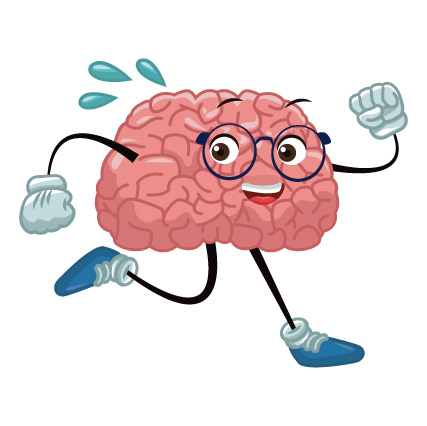
Have you ever wished you could simply download skills into your brain the way you download software onto your computer? Unfortunately, that isn’t an option, but you can do the next best thing: use our 21st-century muscle memory tricks to learn skills in a shorter amount of time.
By taking care of your brain and making use of tricks to more easily master learning material, you can learn touch typing or any other muscle memory-based skill faster than you think. Try these tips to build your brain muscle.
1. Use Active Learning During Keyboarding Lessons
Research shows that active learning tends to work better than other teaching approaches. If your mind is not focused on what you are typing during your keyboarding lessons, you are likely to make more mistakes and end up typing far less efficiently.
While the term “active learning” typically refers to activities that require problem-solving, critical thinking, and knowledge application, it can also apply to activities that require participation and decision-making. You can ensure you are engaging in active learning during typing lessons by including games. Activities that provide time limits and incentives are more likely to result in engagement than simply having to type a copied phrase or sentence.
2. Use Exercise to Boost Brain Chemicals
Exercise can help boost long-term learning. When you do aerobic exercise, your brain releases chemicals that boost the size of the hippocampus, which is one of the most important parts of the brain for learning.
A recent study found that people who do physical exercise four hours after learning have better memory retention. For elementary school students, that may just mean enjoying a moderate amount of recess time or playing in the backyard sometime after classes are over.
3. Get Enough Sleep to Restore Your Muscle Memory
Sleep is even more critical to long-term learning than exercise. Researchers have known for more than a century that memory benefits from sleep, although our understanding of what happens in the brain during the sleep cycle has changed over time. It’s clear that if you want to build on the skills you are learning, including muscle skills such as typing, it’s a good idea to get quality shut-eye time each night.
According to the National Sleep Foundation, most school-age children (ages 6-13) need 9-11 hours per sleep tonight. Teenagers need 8-10 hours, and young adults need 7-9. Sticking to a regular sleep schedule that meets these needs will help you achieve your learning goals, including learning to type efficiently.
4. Repeat, Repeat, Repeat Your Typing Skills Until Mastery
Repetition is ultimately the only way to master a skill, especially a physical one such as touch typing or swinging a golf club. It’s generally better to practice whichever skill you are trying to learn every day or so, even if it’s only for a few minutes, rather than try to learn it all at once in a few days.
However, simply practicing a skill isn’t enough. It’s important to get in quality practice in which you work on areas of the skill where you aren’t as strong. In the context of typing, that generally means focusing on accuracy instead of speed and spending extra time on slower keys.
The accuracy-first approach to typing practice requires more patience in the beginning, but if you use it, you will eventually find yourself typing light years ahead of your peers!
Looking to practice typing with a program that supports active, customized learning? Try Typing Agent today. Our online K-12 keyboarding and technology curriculum automatically adapts to each student and includes exciting games, incentives, and personalization features.


